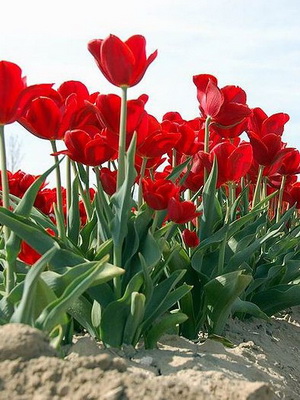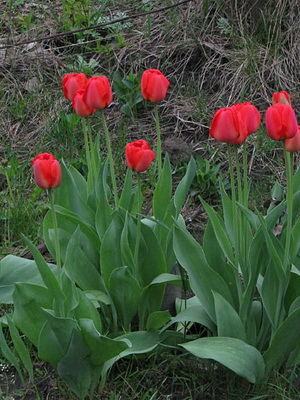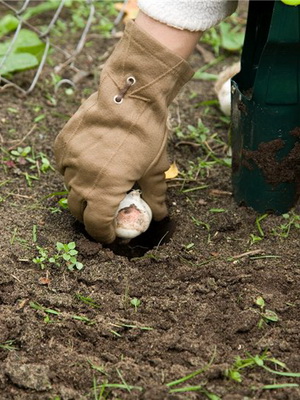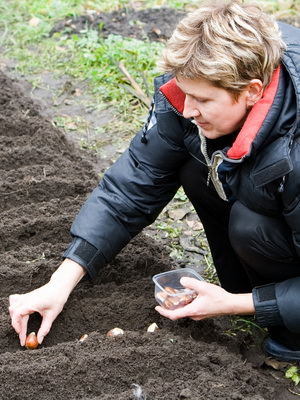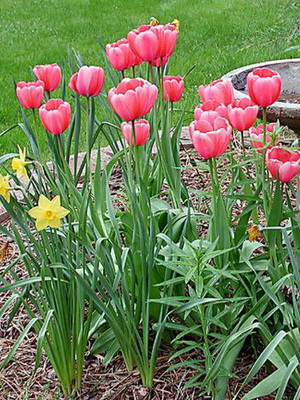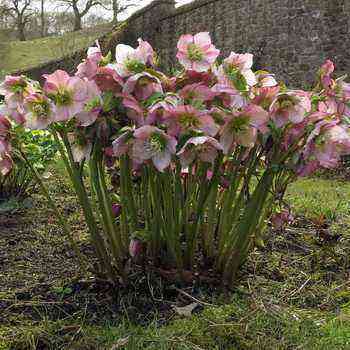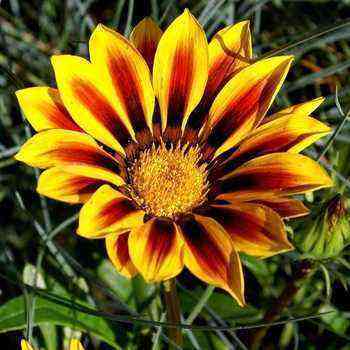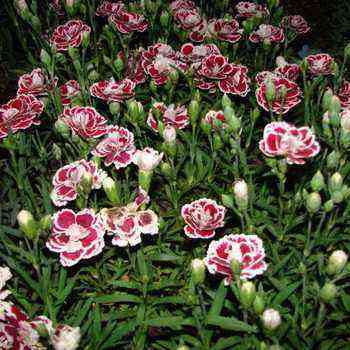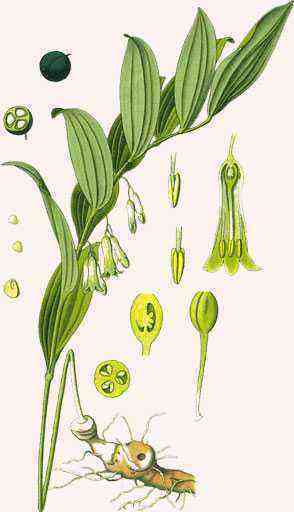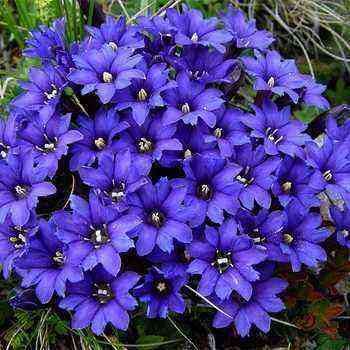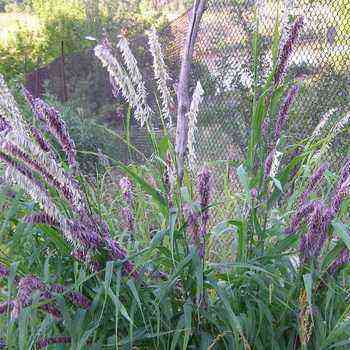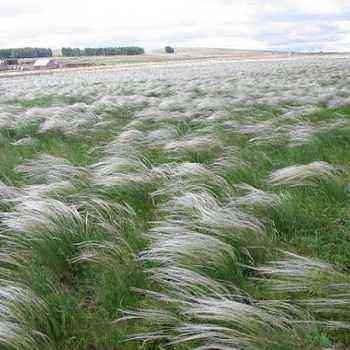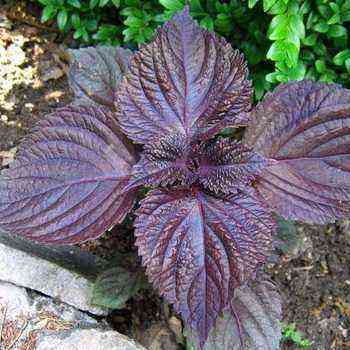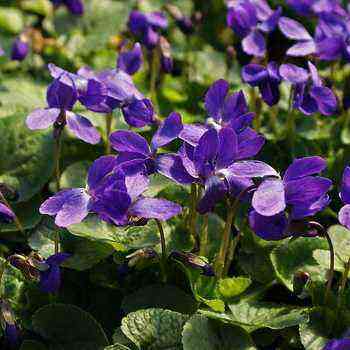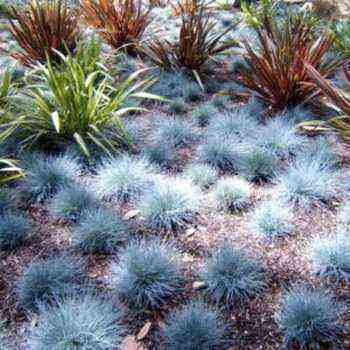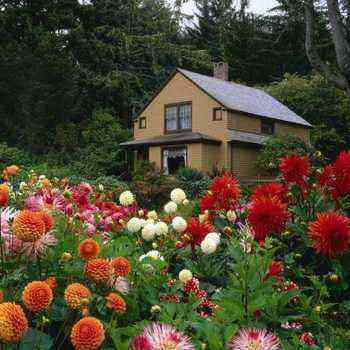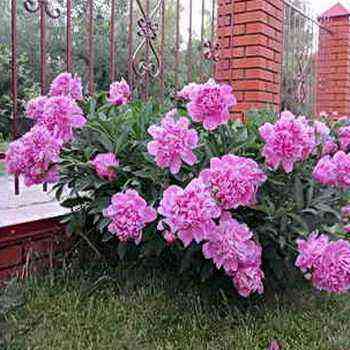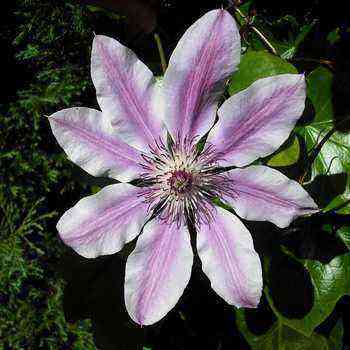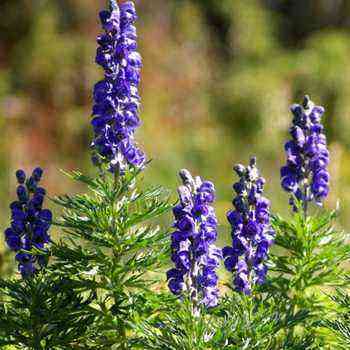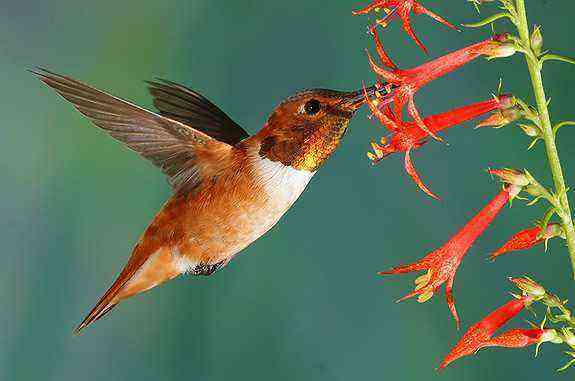
Where to plant tulips: planting bulbs outdoors in the fall
To successfully grow tulips, you need to choose a suitable place for them, plant them correctly and give the flowers the necessary care. Let’s consider the process of growing in stages.
Where to plant tulips depends largely on their class and variety. They are quite demanding on lighting, as they are light-loving plants. Planting tulip bulbs in a well-lit and preferably open area. They can also grow in the shade, but they will bloom later, the flowers will be smaller, the daughter bulbs will develop worse.
However, given the early flowering dates of tulips, planting tulip bulbs in autumn can also be done under trees with a thin crown. First of all, this applies to early flowering varieties. By the time of their flowering (end of April), the trees will not yet have foliage, so the lighting even through the crown will be quite sufficient.
When growing tulips outdoors, almost any vegetable or ornamental plant can be their predecessors. The only exceptions are vegetables of the nightshade family (potatoes, tomatoes, eggplant, bell peppers) and all bulbous flowering plants (daffodils, lilies, gladioli, hyacinths, etc.).
Preparing the soil for planting tulips
There are also a number of requirements for tulip soil. It should not be heavy, loose, fertile, well-drained, with a neutral or slightly acidic reaction. Flowers do not tolerate heavy clay soil, as well as waterlogged soil with stagnant water. Do not plant them in lowlands or grooves – melt water will stay there for a long time in spring, which can lead to rotting of the bulbs.
Before planting, the soil for tulips must be prepared: it is dug deeply with the simultaneous application of fertilizers: 5-6 kg of organic fertilizer (rotted manure, compost), 2-3 kg of peat, 50 g of nitrophoska are applied to 1 m2 of the plot. In heavy clay soils, an additional 5-7 kg of coarse granular sand is added per 1 m2. You can replace the sand with the same volume of perlite. Slaked lime is added to very acidic soil at the rate of 200 g per 1 m2. Alkaline soils are corrected by adding calcium sulfate to them during digging. The dug soil is then loosened, breaking up large clods of earth. Preparation should be carried out 1-2 weeks before planting.
As already mentioned, planting of bulbs is carried out from late September to late October (with minor adjustments for different tulip classes).
Regardless of whether it is your planting material or purchased, the bulbs must be disinfected before planting. For this, a 2% solution of Fundazole is usually used. The bulbs are immersed in small portions for 30-40 minutes in a container with a solution, then dried in the open air for 20 minutes.
Before planting, in the designated area, planting furrows are prepared with a depth of 10-15 cm, depending on the size of the bulbs. When growing babies, the depth of the furrows should be 6 cm. The distance between the furrows in the flower bed should be 20-25 cm. The distance between the bulbs in the furrow depends on the size of this variety.
When planting and caring for tulips in the open field, the bulbs are placed in the furrow with the bottom down or slightly to the side. After that, the furrows are covered with soil, leveled and watered at the rate of 3-5 liters per 1 m2. 1014 days after planting, the bulbs are actively moving into growth, giving shoots up to 1.5 cm and roots up to 3 cm.
How to care for tulips to keep the bulbs from freezing? Before the onset of frost, the planting of tulips must be mulched with a layer of sawdust or peat 6-7 cm long. Mulch will slow down the freezing of the soil and protect the bulbs from frost. Early-flowering tulips have low winter hardiness, so they need to be additionally covered with straw or spruce branches. Medium and late-growing varieties do not need shelter.
Planting and care in spring: how to care for tulips after flowering
Planting and caring for tulips in the spring is a separate topic in the cultivation of these plants. Immediately after the snow melts, it is necessary to remove the shelter so that the bulbs do not overfill. Mulch is not harvested, as it prevents the soil from drying out quickly and prevents weeds from growing. They start caring for tulips in the open field from the moment the first shoots appear. First of all, it is necessary to feed the plants for good root growth.
When caring for tulips in the spring, grooves with a depth of 7-10 cm are made between the rows and a dry complex mineral fertilizer is embedded in them. You can use nitrophosphate (50 g / m2) or a mixture of individual fertilizers: superphosphate (60 g / m2), urea (30 g / m2) and potassium salt (30 g / m2).
The second feeding is done when the first buds appear. This time, fertilizers are given in liquid form. Mineral fertilizers are added to the mullein solution. For 10 liters of solution, it is necessary to add 30 g of potassium salt and 15 g of superphosphate. Nitrogen fertilizer is no longer given. The solution consumption is 8-10 liters per 1 m2. Once again, liquid feeding is repeated after 7-10 days, during active budding and the formation of baby bulbs. It is essential for intense flowering. In addition to fertilizing tulips, watering is required. Water from the moment the first shoots appear, every 8-10 days, consuming 7-10 liters of water per 1 m2.
During flowering, intensive growth and maturation of baby bulbs occurs simultaneously. They also need additional food, so they are given one more top dressing. Without it, flowers and bulbs will compete for nutrients. This top dressing is done in composition and rate the same as the previous two.
Some of the taller tulips may require a slightly higher fertilizer dose than the average given here. In general, the lack of certain minerals is usually judged by the appearance of plants. So, for example, when tulips lack nitrogen, their stems droop, and the leaves and flowers are smaller than is typical for this variety. Lack of potassium and phosphorus affects the appearance of a bluish color at the edges of the leaves.
Cut flowers in the morning. For cutting, tulips are chosen at the stage of a colored bud. You need to cut off either with a well-disinfected tool, or break off the stems. Cut tulips retain their freshness for 7-12 days, depending on the variety. And one more important point – when cutting tulips, it is necessary to leave at least two leaves on the stem so that they can provide adequate nutrition to the bulb. Otherwise, neither the mother’s bulb, nor the baby bulbs will be able to fully develop.
How to care for tulips after flowering in order to preserve the bulbs? After the tulips have faded and the leaves have dried, you can start digging the planting material. The optimal time for this comes when the leaves of most tulips turn yellow by two-thirds of the length. It is not recommended to leave the bulbs in the ground for longer.
Where to plant tulips and how to grow bulbs in a greenhouse

Usually, the bulbs are dormant from the moment they are dug until next spring, but there are a number of tricks that awaken them ahead of time. The entire period of forcing takes an average of 16-22 weeks, depending on the variety (early-flowering varieties have a shorter forcing period).
There are two ways of forcing tulips – traditional and new, Dutch. The first method is less laborious; amateur flower growers prefer to use it. With this method, after storage, the bulbs are transferred into containers, on the bottom of which a layer of coarse river sand 5 cm thick is poured. After that, the containers are placed in a room with a temperature of 10-12 ° C. Before growing tulips in a greenhouse, during the entire rooting period, you need to regularly moisten the substrate, preventing it from drying out. In such conditions, the plants are kept until shoots with a height of 8-9 cm appear above the surface of the substrate.
Next, containers with tulips are placed in a greenhouse. The first 3-4 days, the temperature is maintained at 12-14 ° C, and the containers themselves are covered with a dark film. The film is folded back for airing 2-3 times a day.
Then the film is removed and the temperature in the greenhouse is raised to 18 ° C. The substrate continues to be regularly moistened. The plants are given full lighting. They must also be additionally illuminated for 3-5 hours a day. In such conditions, tulips will bloom in 2-3 weeks.
It should be borne in mind that only early-flowering tulip varieties are suitable for early distillation (January – February). For distillation by March, medium flowering is also suitable. Late-flowering varieties are used only for forcing by April.
